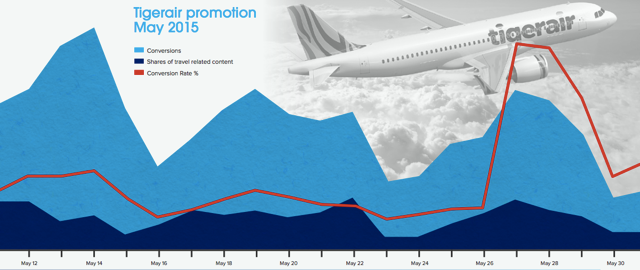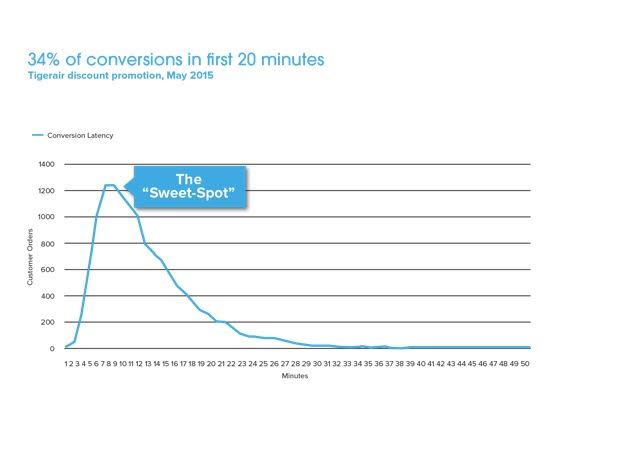Neuroscience, social and tech: tapping into real-time consumer emotions
Share
Marketing has always sought to evoke emotions by creative, but now with the merging of neuroscience with actionable social data, it is being guided by real-time consumer emotions, writes Kerry McCabe.
The impact of data on marketing has already been profound, but so far it has mostly been used to gather information, inform targeting and analyse performance.
Brands are often focusing on competition and reporting, at the expense of real connections with their consumers.
The merging of actionable social data with neuroscience has brought us to a place where advertising – which has always sought to evoke emotion through great creative – can now be guided and triggered by the exact thing marketers are trying to evoke: consumer emotion.
The ability to uncover consumers’ ‘right now’ emotional states is fast becoming the key for brands to activate successful advertising that truly connects at the perfect time.
Developments in this area of tech-enabled neuromarketing are only going to accelerate as marketers stop analysing creative executions and start analysing consumer emotions.
Drugs, data and technology
Neuroscience tells us that emotions are the most powerful drivers of consumer decision-making.
The ability to harness, analyse and act on consumers’ moods and real-time passion points is game-changing.
We have been exploring this theory with Dr Peter Steidl, renowned brand marketing strategist at Neurothinking, to look at his work as it applies to the concept of the ‘sharing economy’ – where consumers share their interests and passions across all social platforms.
His research looks at what consumers are feeling at the time of sharing and receiving content of interest, and then, what drives them to engage with the information that is shared.
We’ve then been looking at his findings and applying them in paid media environments.
Three factors are the central to harnessing this emotion in real time: drugs, data and technology.
The drug we talk about is dopamine: it stimulates a consumer’s heightened emotional state of desire.
The data is social sharing data: what, when and how consumers share the things that really matter to them.
The technology is real-time media delivery: an ability to activate advertising in the ‘right now’ – the exact moment consumers are showing us their emotional state and passion points.
The feel-good transmitter
Neuroscience research says social sharing activates the rewards system of the brain, triggering dopamine releases similar to those we get from sex, food and exercise.
Dopamine is the ‘feel-good transmitter’. Whenever we achieve something the brain rewards us with a pleasurable dopamine release. The important word here is ‘seek’. Dopamine does not make us feel happy, it pushes us to seek happiness.
We know consumers go through these phases when they share online:
- they experience a dopamine release which makes them feel good,
- not long afterwards, they feel a desire for another dopamine hit,
- this makes them more receptive to any proposition they hope might deliver a dopamine release, and
- if the creative message delivered is aligned with the content they shared earlier, we know they’re more open to our offer than consumers who have not shared relevant content in the first place.
The trigger
Once consumers have shared content, the opportunity is to target them and serve them relevant real-time ads.
The objective of our neuromarketing research has been to demonstrate that there’s a direct relationship between content being shared, impressions being served and direct sales.
In this context speed is critical and timing is everything. We now know when consumers will be most responsive to an offer because they are in the prime emotional state of experiencing a dopamine release.
Our recent campaign for Tigerair proved that using ‘sharing events’ as the trigger for marketing activity unlocks a valuable new audience, with 62% of the customers who purchased airfare tickets during the promotion being new customers to the airline.
This same promotion showed the importance of acting immediately, while dopamine levels are peaking, with 34% of all ticket sales occurring within 20 minutes of the sharing event occurring and ad impressions being viewed.
True connection
The traditional holy grail of advertising was the ability to precisely reach valuable consumers who already have, or are about to have, a need to purchase a product or service. For centuries, advertising has also sought to make marketing so enticing that it successfully gains the attention, interest and desire of consumers who had no current need or want for that product or service at all.
When we bring neuroscience insights into the world of tech-enabled advertising, we give marketers the chance to align their messages with the interests, desires and mood of consumers in the ‘right now’.
This involves looking at social sharing data as not just an indicator of advertising receptiveness, but also the perfect signal for marketers to connect with consumers in their ultimate moment of openness.
Instead of seeing to spark consumers’ interests through creative alone, we now know what their interests are. We have immediate insight into what, when and how consumers share the things that really matter to them. And we know that if we act immediately to serve them relevant advertising, we can actually connect with them in a heightened emotional state of desire.
Analysing and activating live social sharing insights is as close to marketing utopia as we’ve ever been. As brands unlock the value of sharing, they can now effectively reach the right person at the right time in the right place – with the right message.
Kerry McCabe is managing director at RadiumOne.

















